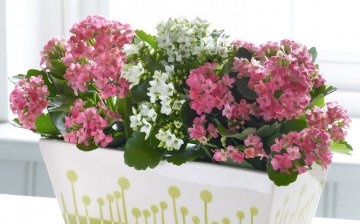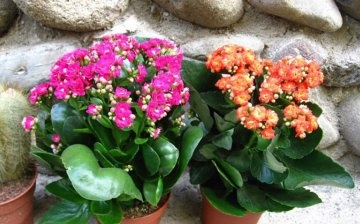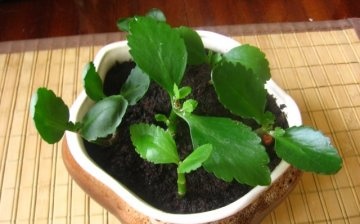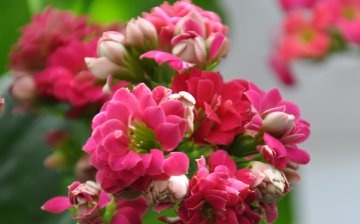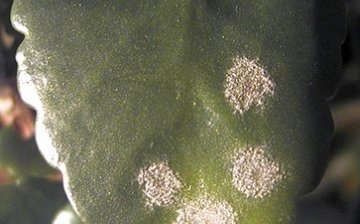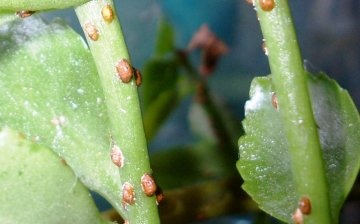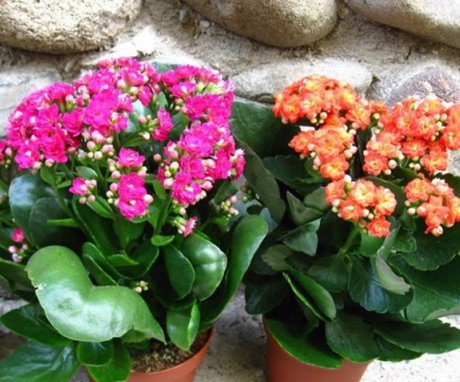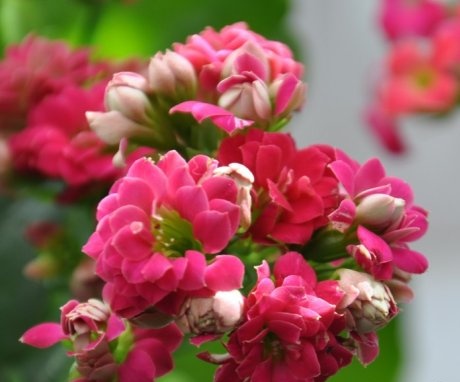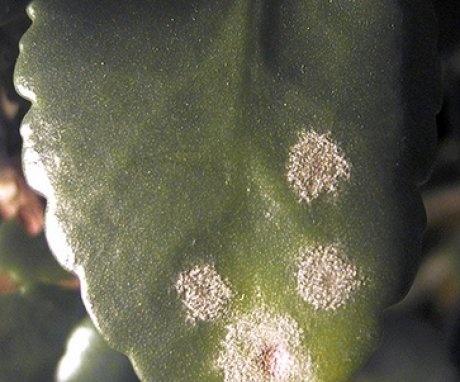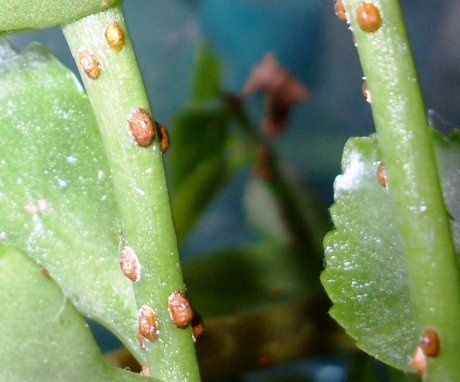Reproduction of Kalanchoe: by leaf, seeds, "children" and cuttings
Kalanchoe is a fairly unpretentious plant to care for. That is why it enjoys a high level of popularity among indoor plants. This flower has not only an attractive appearance, but also reproduces quite simply.
Content:
Plant features
Kalanchoe is a fairly unpretentious plant. This flower can be easily grown at home. It is characterized not only by its attractive appearance, but also has medicinal properties... This flower can have erect or branched stems.
Depending on the type of this plant, it can have a height of 30 to 120 centimeters.
This plant is characterized by the presence of opposite rounded or oblong leaves. They have wavy edges, on which "kids" are kept once a year. The length of the leaf is 5 to 7 centimeters.
Kalanchoe has very small flowers with a diameter of one centimeter. They can be white, pink, orange, bright red, purple, etc. color. This plant begins to bloom in March and ends in June.
Reproduction of Kalanchoe
This plant can reproduce by:
- Seed
- Cherenkov
- Leaves
- "Children"
The easiest way to grow Kalanchoe is to grow with seeds:
- You can purchase seeds at a specialty store. Planting seeds should be done in late winter or early spring. They only need to be sown on the surface of the soil.
- You do not need to sprinkle the seeds with earth. They are covered with paper or glass on top. It is necessary to open glass or paper several times a day in order to ventilate.
- Seeds need to provide a temperature of 16-20 degrees. Also, the seeds need to be regularly watered. For this purpose, warm water is used. Glass and paper are removed after germination. The strongest sprouts are transplanted into pots.
A fairly simple and effective way is to propagate this plant using a leaf:
- For this purpose, you can use an old leaf that has fallen off the plant.
- In order for it to take root, it only needs to be placed in water.
- If the leaf begins to rot in the water, then it must be pinched off.
- After the first roots appear on the leaf, it must be transplanted into a pot with soil.
Also, this plant can be propagated using cuttings:
- For this purpose, the apical shoots are used. Their length should be between 5 and 8 centimeters.
- In order for the shoots to take root as quickly as possible, they must be cut diagonally.
- Shoots are planted immediately into the ground.
- In order for the shoots to germinate as quickly as possible, they need to provide good lighting and timely watering.
Reproduction of Kalanchoe by "children":
- Can be carried out arbitrarily or with the help of a person.
- This propagation method is used for plants that have daughter shoots. To do this, it is necessary to separate the "babies" from the mother plant and place them in the soil. In this case, the soil should be characterized by a large amount of sand.
- A flower transplant should be carried out only after the "babies" have completely rooted.
The simplest and most unpretentious method of propagation of this plant is propagation with the help of a leaf. This is due to the simplicity of leaf germination, as well as unpretentious care.
Features of Kalanchoe care
In order for the Kalanchoe flower to fully grow and develop after planting, it needs provide proper care... This plant loves moderate temperatures. During the dormant period (winter), this plant must provide a temperature of 10 to 12 degrees. In this case, watering the flower should be done once a month. The minimum room temperature must be at least 8 degrees.
The Kalanchoe flower loves bright and intense lighting:
- That is why the pot with Kalanchoe must be installed in a well-lit place.
- Direct sunlight on this plant should only fall in the morning or evening.
- At lunchtime, it is best to save this plant from sunlight, as it can get burned.
- The best options for growing a flower are east and west windows.
Kalanchoe is characterized by resistance to dry air. In order to avoid diseases of this plant, it is necessary to spray it no more than once a month. It is necessary to wash off the dust from the leaves of this flower with a damp sponge. Spraying on buds and blossoming Kalanchoe flowers is strictly prohibited.
Kalanchoe needs to provide moderate watering in the spring and summer. The reduction in the volume and frequency of watering begins in the fall. This plant can tolerate overdrying quite easily. If a given plant is over-watered, it may die. Watering the Kalanchoe is done as the soil dries out.
Since spring, this plant needs organic and mineral fertilizers.
In this case, they must be alternated. You can prepare fertilizers yourself, or you can purchase them in a specialized store. Fertilizers for cacti are ideal in this case. Providing full care for the Kalanchoe, which multiplies from the leaf, it is possible to get a full-fledged6 plant in the first year. Kalanchoe will begin to bloom next year.
Kalanchoe diseases
In order to ensure the full growth and development of a plant after reproducing it with the help of a leaf, it is necessary to monitor it. When the first signs of the disease appear, it is necessary to immediately provide treatment for Kalanchoe. Most often, this plant is infected with the following diseases:
- Kalanchoe virus
- Greening the petals
- Ring spot virus
- Late blight
- Powdery mildew
- Gray rot
- Stem rot
When a white powdery coating appears on the underside of the leaves, one can suspect a disease of this plant with powdery mildew. This plant is also capable of infecting flowers. Kalanchoe fabrics are brown in color under bloom. With a weak manifestation of this disease, it is necessary to use fungicides. In preventive measures, it is necessary to choose varieties resistant to this disease.
The Kalanchoe virus is characterized by bulge and ugliness. Young foliage turns light green. When this disease appears, it is necessary to isolate and destroy the infected plants. If the petals of Kalanchoe flowers become smaller and turn green, then this indicates the greening of the petals. In this case, it is also necessary to isolate and destroy the plant.
When gray rot appears, the affected tissues of this plant are characterized by softness and wateriness. With increased air humidity, a gray bloom forms on the leaves of this plant.
When a disease appears, it is necessary to remove the affected areas of the plant. In winter, it is imperative to reduce the humidity in the room.In the presence of this disease, in no case should the plants be sprayed. When late blight occurs, some parts of the plant wither, and then dry up. The spread of this disease starts from the base of the stem. Diseased plants must be destroyed, and the rest must be kept at a very low percentage of moisture.
When watery black rot spots appear, stem rot can be judged. When this disease appears, shoots can die off. If you look at the plant under a magnifying glass, you can see small white sporangia. When this disease occurs, the diseased Kalanchoe must be isolated. Initially, the Kalanchoe is sprayed with insecticides, and if this does not bring results, then it is destroyed.
Plant pests
After breeding Kalanchoe can be attacked such pestslike aphids, chervens and ticks. If small spots of yellow color appear on the leaves of the plant, this means that the plant is attacked by ticks. Later, these areas become discolored and dried out. When mites attack, deformation of leaves and shoots can be observed. These pests are caused by dry air and low temperatures. In case of mild damage, the plant must be treated with mineral oil or soap.
If the leaves of this plant turn yellow and curl, then this indicates that aphids attacked it.
With a strong defeat of Kalanchoe, sticky aphid secretions can be seen. With a weak lesion the plant needs to be processed soapy water. You can also spray it with insecticides. If a wax-like discharge appears on the leaf veins, then this means that mites are infecting it. In this case, it is necessary to remove the affected plants. They can also be treated with mineral oil.
Reproduction of Kalanchoe from a leaf is the easiest way. At the same time, it is necessary to provide full care for the plant, as well as limit it from the appearance of diseases and pests.
More information about caring for Kalanchoe can be found in the video.



